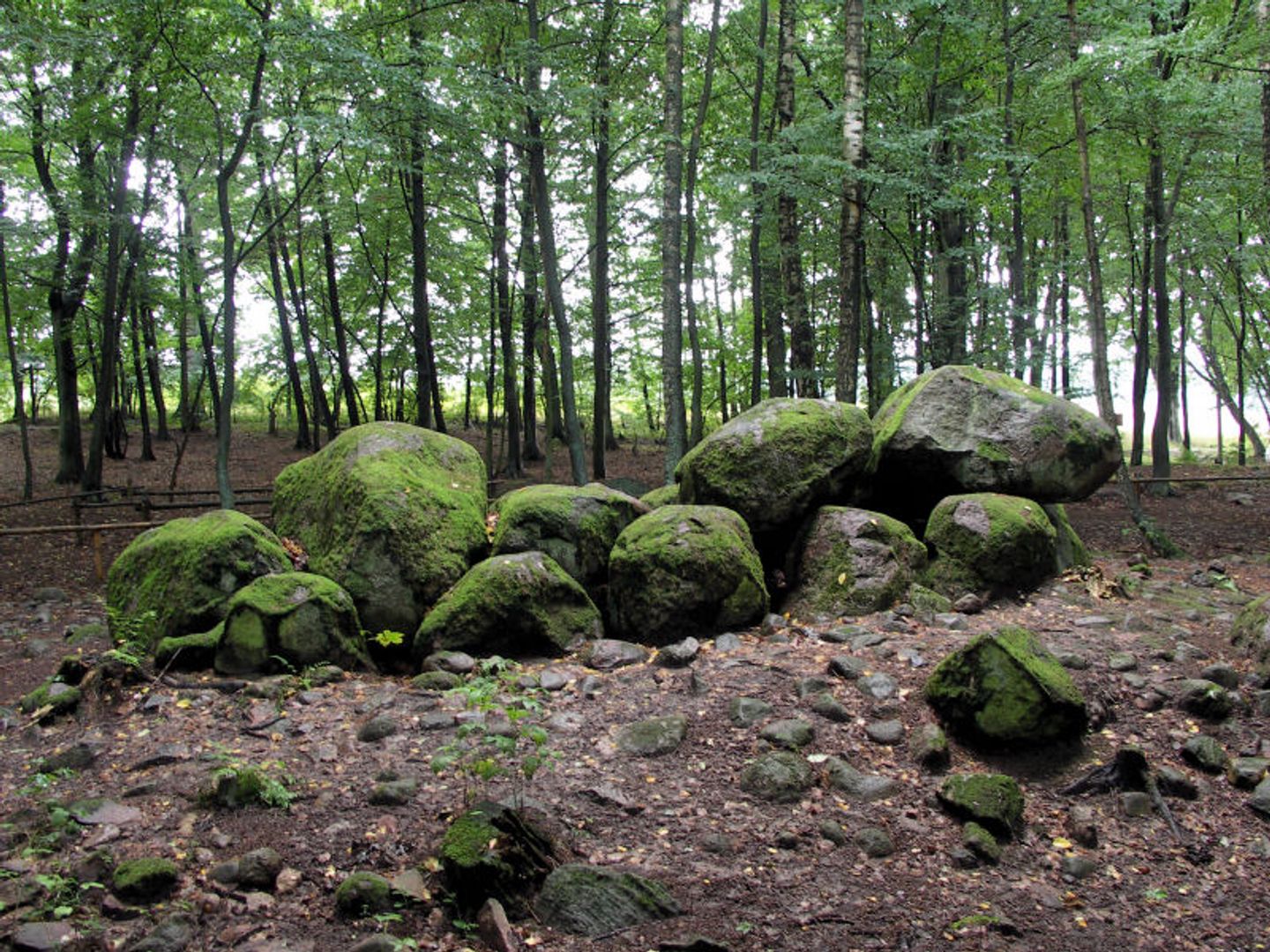Borkowo
7.25

Overview
The megalithic cemetery in Borkowo, located in the West Pomeranian Voivodeship, dates back to the Neolithic period, around 5000 BCE. This unique site features the only developed dolmen found within the territory of Poland and east of the Elbe River. The dolmen is constructed from twelve stone blocks, topped by four large boulders, measuring 5.5 by 1.5 meters. Additionally, the cemetery includes three rectangular non-chambered tombs and five burial mounds, highlighting the architectural diversity of the location.
Archaeological research conducted by Ernst Sprockhoff and Werner Boege in the 1930s revealed a rich historical and cultural context. In Borkowo, 32 archaeological sites have been identified, half of which are associated with the Neolithic period, while the others relate to early medieval and medieval settlements. According to archaeologist Ignacy Skrzypek, megalithic structures—such as passage graves, menhirs, and dolmens—are manifestations of ancestor worship.
In Poland, megalithic tombs began to appear in the 3rd millennium BCE. These structures were characterized by massive burial mounds and stone-lined tombs, with lengths ranging from 15 to 100 meters and heights reaching up to 4 meters. The builders of these megaliths are linked to the Funnelbeaker culture, which was based on animal husbandry and primitive agriculture. Settlements of this culture were located near water sources, and their inhabitants utilized a variety of stone tools and demonstrated advanced pottery skills.
Interestingly, non-chambered tombs are an older form than chambered tombs, with construction spanning from the late 5th millennium BCE through the 4th and 3rd millennia. Non-chambered tombs may have been directly inherited from earlier agricultural tribes, making Borkowo a key site for research into prehistoric settlement and culture in the region. Valuable artifacts from the Borkowo excavations—such as axes, spearheads, and other tools—are housed in the Museum in Koszalin, underscoring the cultural richness of this location.
Location
2025 Wizytor | All Rights Reserved